Resources
Glossary
Z-Axis Lead Screw Nut
A Z-axis lead screw nut is a precision-machined component that works in combination with a lead screw to convert rotational motion into linear motion—specifically along the Z-axis, which is the vertical axis in most mechanical systems or CNC machinery.
In simpler terms, when the lead screw rotates, the lead screw nut travels up or down the screw’s threads, moving a platform, spindle, or tool vertically. This controlled linear movement is critical for accurate lifting, lowering, or positioning functions in machines like 3D printers, CNC mills, lathes, laser engravers, and robotics systems.
The nut is typically made of bronze, brass, steel, or self-lubricating polymer (like Delrin or PTFE) to minimize friction and wear during constant motion. It’s internally threaded with the same thread form and pitch as the lead screw—often ACME threads or trapezoidal threads for higher load capacity and smooth movement.
Together, the Z-axis lead screw and nut form a mechanical linear actuator, where precision, repeatability, and rigidity are essential. The Z-axis version in particular must resist backlash (unwanted play between threads) and gravitational drift, as it often supports the full weight of a moving assembly, such as a milling head or print bed.
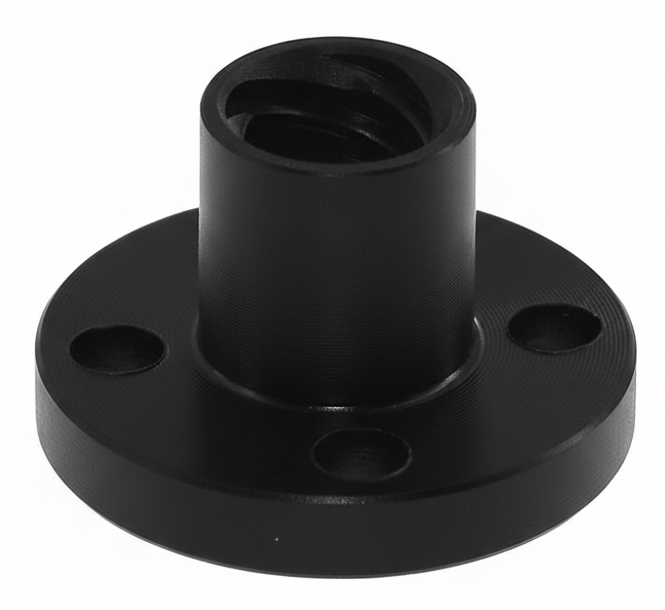
Z-Bar
A Z-bar is a structural or mounting component shaped like the letter “Z” when viewed in profile. It’s typically made from metal (such as aluminum or steel) and is used in construction, framing, and mounting applications where strength and alignment are important.
The Z shape provides rigidity and allows the bar to act as a spacer, bracket, or interlocking support. In architectural and fabrication settings, Z-bars are often used to join panels, provide backing for siding, or create hidden mounting systems. In glazing and sign-making, Z-bars can act as supports for flush-mount installations.
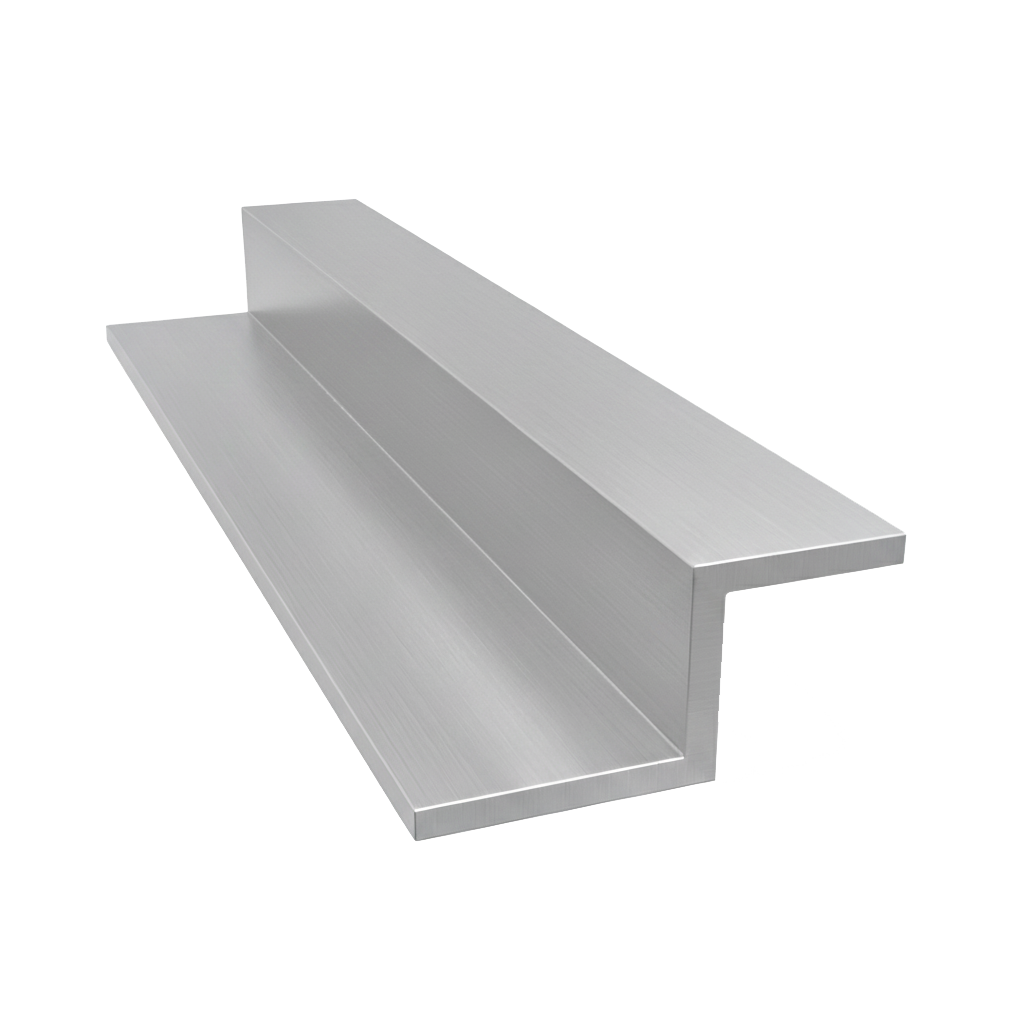
Z-Clip
A Z-clip, also known as a Z-fastener, is a fastening system shaped like the letter “Z” that is commonly used to mount panels, signs, or architectural features flush against a surface. It consists of two interlocking metal clips: one is attached to the wall or frame, and the other is attached to the panel or object being mounted. When the two are slid together, they lock in place securely, creating a hidden fastening system.
Because of their Z-shape, these clips allow for easy installation and removal while still supporting significant weight. They are often made from aluminum or steel for strength and corrosion resistance. Z-clips create a clean, professional look because the hardware is concealed once the panel is installed.
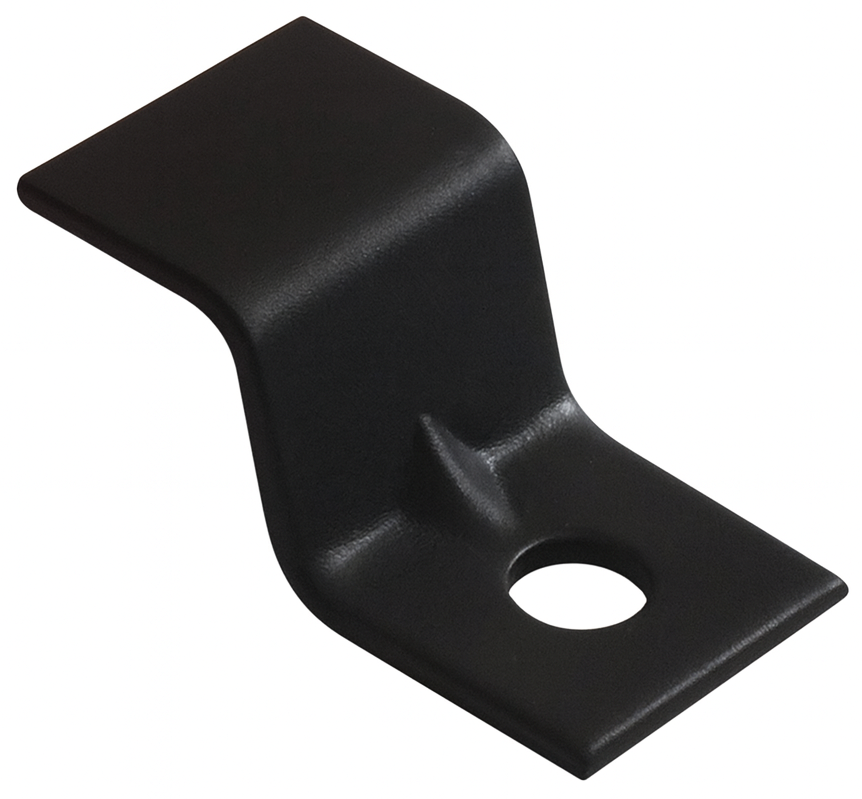
Zerk Fitting
A zerk fitting (also known as a grease fitting, grease nipple, or Alemite fitting) is a small, one-way mechanical valve that allows grease and other lubricants to be injected into moving parts, such as bearings and joints, under pressure.
Its design includes a spring-loaded ball check valve. When a grease gun is applied, the ball is pushed down, opening a passage for the lubricant to enter. Once the gun is removed, the ball seals the opening to prevent the grease from escaping and to keep dirt and contaminants from getting in.
Zerk fittings provide a clean and efficient way to lubricate machinery without needing to take it apart, which helps to reduce friction and wear and extend the lifespan of mechanical assemblies. They are commonly found on automotive, agricultural, and industrial equipment.
AKA: Grease Fitting, Grease Nipple, Alemite Fitting
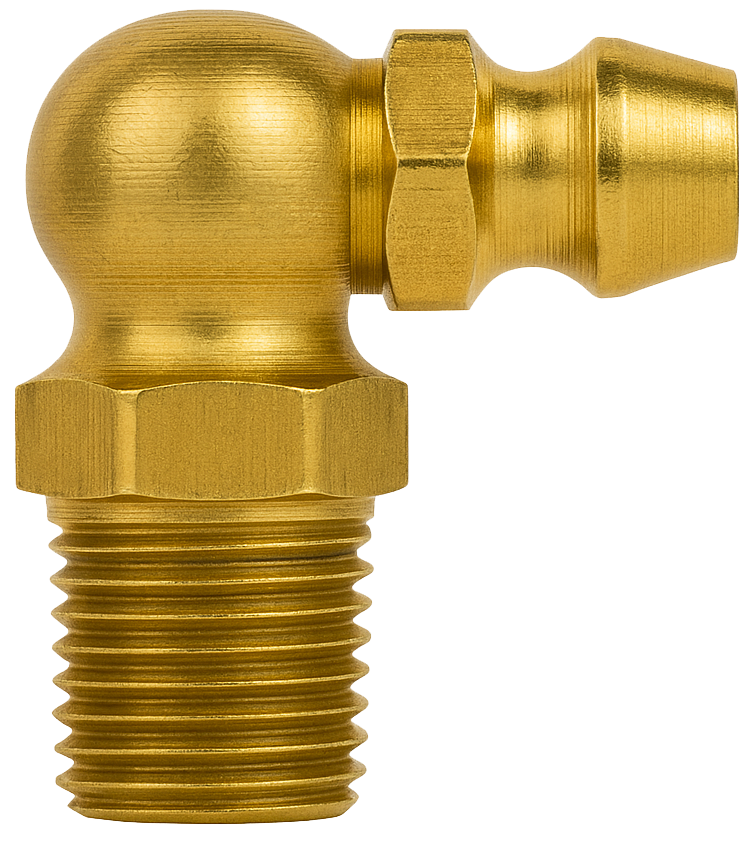
Zinc (Zn)
Zinc is a bluish-white metallic element with the chemical symbol Zn and atomic number 30. It is a transition metal known for its excellent corrosion resistance, moderate strength, and ability to form protective coatings and alloys. Zinc plays an essential role in both industry and biology, making it one of the most versatile and widely used metals on Earth.
In its pure form, zinc is brittle at room temperature but becomes malleable and ductile when heated between about 100–150°C (212–302°F). It has a melting point of 419.5°C (787°F) and a density of 7.13 g/cm³. When exposed to air, it reacts with oxygen and carbon dioxide to form a thin layer of zinc carbonate (ZnCO₃) or zinc oxide (ZnO), which protects the underlying metal from further corrosion—similar to how aluminum forms a protective oxide layer.
The most common industrial use of zinc is galvanization—coating steel or iron with a thin layer of zinc to prevent rust. This process is essential for making nuts, bolts, fasteners, sheet metal, and structural components more durable in outdoor or marine environments. Galvanized steel owes its long lifespan and weather resistance to zinc’s sacrificial protection—if the coating is scratched, zinc will corrode preferentially, shielding the steel beneath.
Zinc is also a vital component in alloys. It’s used to make brass (copper + zinc), nickel silver, and various die-casting alloys for automotive parts, electronics housings, and hardware. It’s also used in batteries—especially in zinc-carbon and zinc-air cells—as well as in paints, rubber, pharmaceuticals, and fertilizers.
Zinc oxide (ZnO), one of its most important compounds, serves as a pigment, UV absorber, and antibacterial agent. It’s used in sunscreen, rubber vulcanization, paints, ceramics, and medical ointments (such as zinc oxide creams for skin protection).
Biologically, zinc is an essential trace element required for human health. It supports immune function, wound healing, enzyme activity, and DNA synthesis. Zinc deficiency can lead to stunted growth, weakened immunity, and other health issues.
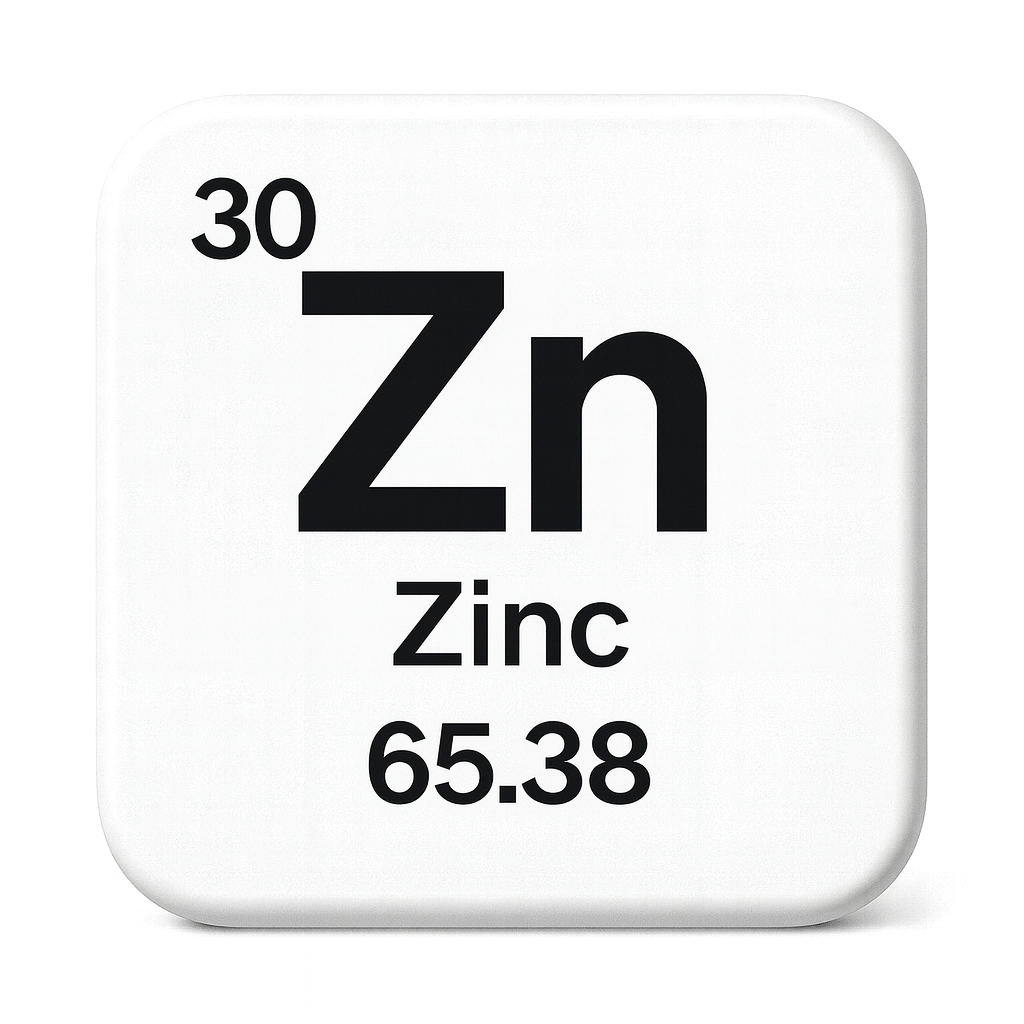
Zinc Black Trivalent
A corrosion-resistant finish where metallic zinc is deposited on the fastener’s surface through electroplating. This is followed by a black trivalent chromate treatment that enhances both appearance and corrosion protection. A Zinc Black Trivalent finish is often used when a fastener needs to be both visually appealing and resistant to corrosion.
Appearance - A Zinc Black Trivalent plating results in a smooth, glossy black surface with a uniform finish.
Zinc Clear Trivalent
Zinc Clear Trivalent is a corrosion-resistant finish where metallic zinc is first deposited on the fastener’s surface through electroplating. This is followed by a clear or colorless trivalent chromate treatment, which adds an extra layer of corrosion protection. Together, these provide up to 72 hours of salt spray resistance, making it a reliable finish for many applications. The trivalent chromate is also a safer and more environmentally friendly alternative to older hexavalent chromium finishes.
Appearance - Fasteners with this finish have a distinct silver color with a slight blue tint. Overseas platers often produce a dull silver tone, while U.S. platers may enhance the finish with blue brighteners for a glossy, chrome-like appearance.
Zinc Dichromate
Zinc dichromate is a type of plating finish applied to steel fasteners to provide corrosion resistance and a distinctive yellow-gold appearance. It is created by first electroplating the steel with a layer of zinc, then applying a dichromate conversion coating (a type of chromate passivation). This dual layer protects the base metal by slowing oxidation and offering sacrificial protection—meaning the zinc corrodes before the steel does.
Zinc dichromate is widely used because it provides better corrosion protection than plain zinc plating, while also giving fasteners a recognizable yellow or iridescent finish. However, because traditional dichromates contain hexavalent chromium (Cr6+), which is hazardous to health and the environment, many industries are phasing it out in favor of safer alternatives like trivalent chromates or zinc flake coatings.
Zinc Flake Black (Magni 656)
A corrosion-resistant coating made from a mixture of zinc and aluminum flakes, typically applied using a dip-spin process. This finish produces a matte black appearance with a rough, uneven texture similar to Zinc Flake Silver. This coating is designed to provide high corrosion protection without the risk of hydrogen embrittlement. Making Zinc Flake Black ideal for high-strength fasteners used in demanding environments.
Appearance - This coating has a matte black finish with a slightly rough, uneven surface.
Zinc Flake Coating
Zinc flake coating is a non-electrolytic finish made of zinc and aluminum flakes in a binder, applied by spraying or dipping and then cured with heat. Despite being thin, it offers very high corrosion resistance, often exceeding 1,000 hours in salt spray testing. It eliminates the risk of hydrogen embrittlement, making it especially suitable for high-strength fasteners and critical applications in industries like automotive and aerospace.
Blog Post: What Are Zinc Flake Coatings and Why Are They Important
Zinc Flake Silver (Magni 501)
Zinc Flake Silver (Magni 501) is a chrome-free, zinc-rich coating applied to fasteners primarily via a dip-spin process. Designed as a high-performance alternative to traditional zinc platings, it provides excellent corrosion resistance without the risk of hydrogen embrittlement.
Appearance - This finish typically appears as a dull gray, less textured than hot-dipped galvanized, yet still somewhat rough and uneven.
Zinc Olive Drab
Zinc Olive Drab is a corrosion-resistant finish where metallic zinc is first deposited on the fastener’s surface through electroplating. This is followed by an olive drab chromate treatment, traditionally hexavalent, that enhances corrosion protection and provides a darker, low-glare appearance. While originally developed for military use, it is also used in other applications that require both protection and a subdued finish. Due to environmental regulations like the European Union’s RoHS directive, which restricts hexavalent chromium, trivalent alternatives are now more commonly used in RoHS-compliant applications.
Appearance - Fasteners with a Zinc Olive Drab finish typically appear dull green to olive in color, often with an iridescent sheen that may reflect shades of purple, pink, or bronze depending on the lighting. This finish is darker and more muted than Zinc Yellow, but the iridescent effect can be visually similar
Zinc Phosphate
Zinc phosphate coating is a type of conversion coating applied to steel and iron fasteners to improve corrosion resistance, wear resistance, and paint adhesion. It is created through a chemical reaction in a phosphating solution, where zinc phosphate crystals form and bond tightly to the metal surface, creating a thin, matte, gray-to-black protective layer.
Unlike zinc plating, which deposits a layer of metallic zinc, zinc phosphate is a non-metallic crystalline coating that serves as a base for further treatments. It is often combined with oils, paints, or other topcoats to provide enhanced protection against rust. The microcrystalline structure also reduces friction, making it useful in fasteners where controlled torque and lubrication are important.
Zinc Plating
Zinc coating is a metallic layer of zinc applied directly to steel through processes like electroplating, hot-dip galvanizing, or mechanical plating. The zinc protects the steel by corroding first (sacrificial protection). Coating thickness varies depending on the method, and it provides reliable corrosion resistance but can be prone to hydrogen embrittlement on high-strength parts.
Zinc Whiskers
Zinc whiskers are tiny, hair-like metallic filaments that can spontaneously grow from surfaces coated with zinc, such as galvanized steel, zinc-plated fasteners, or zinc-coated flooring panels. They typically form over time due to internal stresses in the zinc coating, such as those caused by electroplating, oxidation, or mechanical strain.
Zinc whiskers are usually only a few microns in diameter but can grow several millimeters long. While they don’t usually affect the structural performance of fasteners, they pose serious risks in electronics and data centers because loose whiskers can break off, become airborne, and cause short circuits, arcing, or equipment failures if they land on sensitive electronic components.

Where you’ll see it
Galvanized or zinc-plated surfaces in old raised floor systems, cabinets, or panels.
Electronics and aerospace industries, where whisker-induced failures can be catastrophic.
Fasteners and hardware exposed to long-term stress, leading to gradual whisker growth.
In short: Zinc whiskers are a microscopic contamination hazard rather than a structural issue, making them a critical concern in environments requiring clean, reliable electronics.
Zinc Yellow
Zinc Yellow is a corrosion-resistant finish where metallic zinc is first deposited on the fastener’s surface through electroplating. This is followed by a yellow hexavalent chromate treatment that provides enhanced corrosion protection, often offering up to 120 hours of salt spray resistance. However, due to environmental regulations such as the European Union’s RoHS directive, the use of hexavalent chromium is restricted in some markets, leading to the growing use of trivalent chromium as a safer alternative.
Appearance - Fasteners with a Zinc Yellow finish have a bright, golden-yellow color that can show iridescent shades of green, pink, or purple, depending on the lighting. This finish tends to be more vibrant and colorful than its trivalent counterpart.
Zinc Yellow Trivalent
Zinc Yellow Trivalent is a corrosion-resistant finish where metallic zinc is first deposited on the fastener’s surface through electroplating. This is followed by a yellow trivalent chromate treatment that enhances corrosion protection while meeting environmental and safety standards. It provides a safer alternative to traditional hexavalent finishes.
Appearance - Fasteners with this finish have a bright yellow or gold color, often showing iridescent hints of green, pink, or purple depending on the lighting. Generally, fasteners with a Zinc Yellow Trivalent finish have a less vibrant color compared to traditional hexavalent Zinc Yellow finishes.
Zinc-Plated Steel
Zinc-plated steel is carbon or alloy steel that has been coated with a thin layer of zinc to provide corrosion resistance and enhanced durability. The zinc acts as a protective barrier between the steel and the surrounding environment, preventing moisture and oxygen from reaching the steel surface — two key factors that cause rust and oxidation.
The coating process, called electroplating (or electro-galvanizing), involves immersing the steel part in a zinc salt solution and passing an electric current through it. This deposits a thin, even layer of zinc—usually between 5 to 25 microns thick—onto the steel surface. The resulting finish is typically bright silver, bluish, or yellowish depending on the post-treatment (such as clear, blue, or yellow chromate passivation).
Zinc-plated steel offers two types of corrosion protection:
- Barrier protection, where the zinc layer physically seals the steel from air and moisture.
- Sacrificial protection, where zinc, being more reactive than iron, corrodes first when the surface is damaged or scratched—effectively protecting the underlying steel from rust.
This makes zinc-plated steel a cost-effective choice for fasteners, brackets, bolts, nuts, washers, and hardware used in automotive, construction, machinery, and general manufacturing applications. However, while it resists corrosion better than bare steel, zinc plating is not as durable as hot-dip galvanizing, which provides a much thicker zinc layer and better long-term outdoor protection.
Zintek®
A zinc-flake corrosion protection system from NOF Metal Coatings. Zintek® coatings provide long-lasting resistance in harsh environments, are free of hexavalent chromium, and are often used in the automotive and industrial sectors where reliable sacrificial protection is critical.
Zygologist
A zygologist is an expert in the science of fastening and joining, also known as zygology. In practical terms, a zygologist specializes in understanding how parts are connected — whether through bolts, screws, rivets, adhesives, or other fastening methods — and recommends the best solution for each application. While not a common job title today, it essentially describes a fastener or joining technology specialist.
Zygology
Zygology is the scientific study of how things join together — in other words, the science of fastening and joining.
The word comes from the Greek root zygon (meaning “yoke” or “joining”). In practice, zygology covers the methods, technologies, and principles behind mechanical fastening, bonding, welding, and other ways materials are connected.
In the fastener industry, the term is sometimes used more broadly to describe the engineering discipline of fastening solutions — essentially the knowledge of which fastener, coating, or joining technique is best for a given application.
